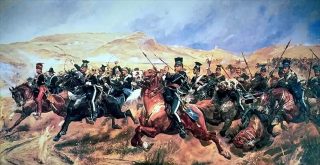In the movie, Miracle about the 1980 US men’s Olympic hockey team, there is a scene where head coach Herb Brooks is evaluating talent. At one point he turns to his assistant coach Craig Patrick and says: “I’m not looking for the best players, Craig. I’m looking for the right ones.” Brooks was searching for that elusive element: Team Chemistry.
What is Team Chemistry exactly? It is something that has vexed coaches, players and fans for ages. It appears that successful teams have Team Chemistry and failing teams don’t. But that begs the question, perhaps successful teams have good Team Chemistry because they are successful, and it is the lack of success that causes bad teams to have bad Team Chemistry.
As a fan of the Seattle Mariners I was riding high this June when the Mariners were 46-25 with an 11 ½ game lead over the Oakland A’s. The buzz in Seattle was that this team is special, and they just seemed to “click.” From that peak in June the team started a downward spiral that culminated last week in an ugly brawl in the club house just hours before game time. Fans in Seattle are still talking about this team’s chemistry, only now the emphasis is on how bad it is. The Mariners are now 77-62, 5 ½ games behind Oakland in the playoff race. Did the bad chemistry cause the downward spiral? Or did the downward spiral cause the bad chemistry?
In baseball there is a metric for everything, however, there is no metric for Team Chemistry. It has been called the “Holy Grail” of baseball statistics. If a Team Chemistry metric did exist, Astro’s Manager A.J. Hinch says it would be a “great tiebreaker.” That is, if you’re evaluating two players with equal statistical value, favor the one that elevates the play of teammates instead of bringing them down.
A new research paper has shed some light on the issue of Team Chemistry. “In Search of the Holy Grail: Team Chemistry and Where to Find It” was authored by two economists from the Federal Reserve Bank and a professor from the University of Indiana.
The authors used advanced statistics to create a new statistic they call Intangible. It indicates “those players who have a knack for exceeding expectations on the dimension of team chemistry.” They call this the “David Ross Effect” after the journeyman catcher who played 16 seasons in the Major Leagues, most of them as a back-up catcher. David Ross’ statistics were average at best, but everywhere he went, the teams he played on tended to win. David Ross was a key addition to the 2016 World Champion Chicago Cubs. When the authors analyzed the numbers on David Ross’ career, they discovered he did indeed have high Intangibles. The researchers also discovered “MLB teams have in the past placed too low of a value on the Intangibles aspect of chemistry than the value of a win would suggest is appropriate.”
Analyzing data from 1998 – 2016 the authors determine that roughly 40% of what statisticians previously called “unexplained variation” in team wins is actually determined by Team Chemistry. This is a huge number, and a significant finding that has repercussions beyond baseball.
The next big question is what exactly are players doing to achieve high Intangible values? That is, what behaviors lend themselves to being a good teammate, someone who makes everyone around them better? Don’t worry, researchers are already on it. A team from the University of California at Berkley have placed GoPro cameras in the dugout of the San Francisco Giants minor-league affiliate in San Jose to observe and track behavior that impacts chemistry.
The research into Team Chemistry is still in its early stages, but studies like this one in baseball are leading the way toward a future where the Intangible value of all employees is measured, tracked over time, and used for talent-related decisions. With the help of Artificial Intelligence and the collection of vast amounts of data, one could easily speculate that a Team Chemistry quotient is coming to corporate America in the next 10-20 years. Indeed, Ray Dalio of Bridgewater Group is already pioneering this space by transparently publishing “baseball cards” on all employees that track similar metrics.
I believe there will always be a role for team-building and other activities that engender trust among teammates. However, in the near future, managers will have more accurate data on which employees make everyone around them better, and which employees have the opposite effect. Hopefully this will mean less fights in clubhouses for baseball, and more high-performing teams in business.
Source Notes
Baseball Tackles Workplace Mystery: How to Build Team Chemistry? (WSJ)
Chasing the ‘Holy Grail’ of Baseball Performance (The Atlantic)
In Search of the Holy Grail: Team Chemistry and Where to Find it (Research Paper)
Ray Dalio and Bridgewater (Business Insider)
Brawl Breaks out in Seattle Mariners Clubhouse (CBS News)
About the Author
Sean P. Murray is an author, speaker and consultant in the areas of leadership development and talent management. Learn more at RealTime Performance.
Follow Me on Twitter: @seanpmurray111
Join my mailing list and be updated when I publish new articles.


